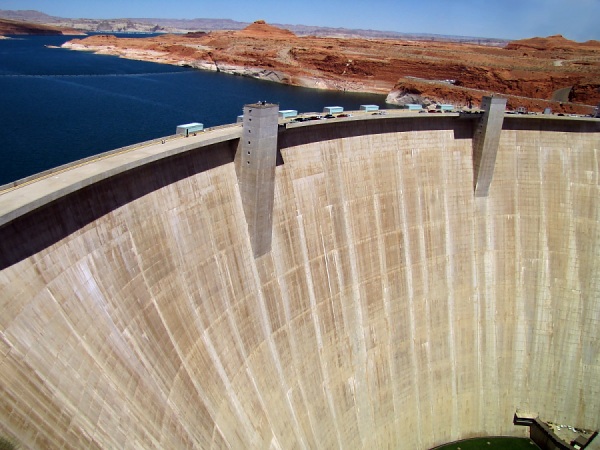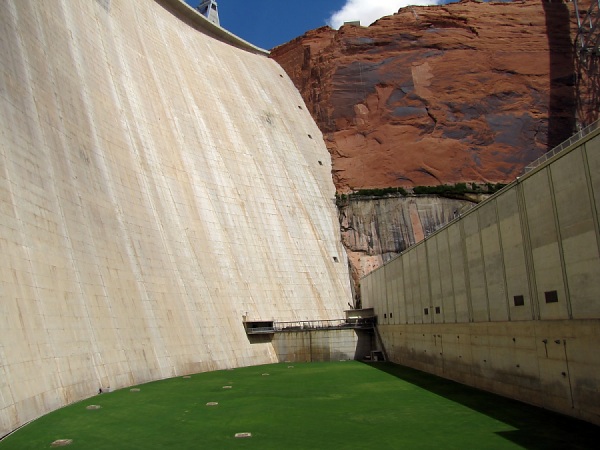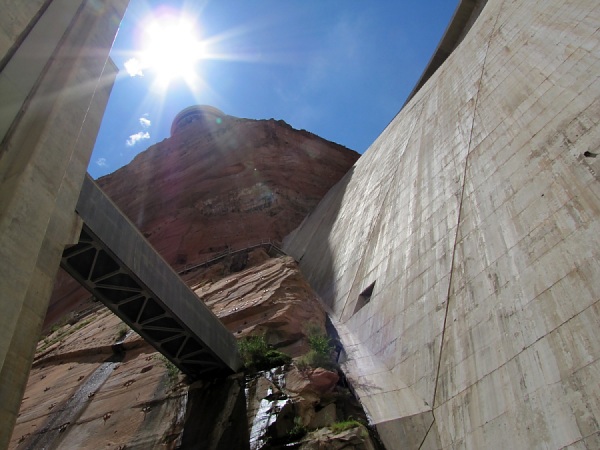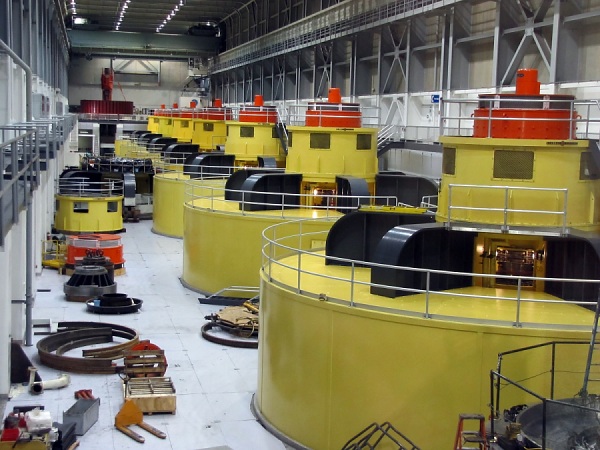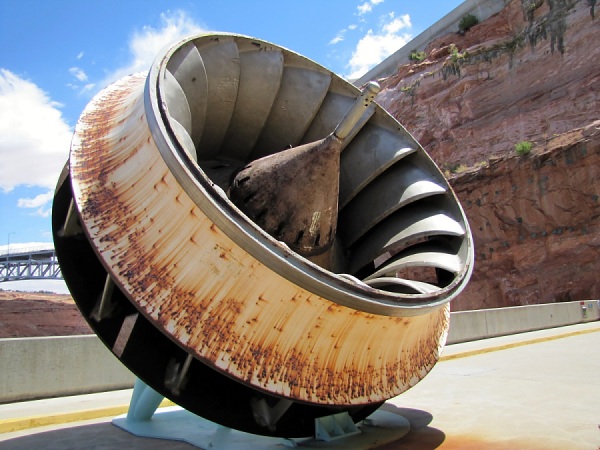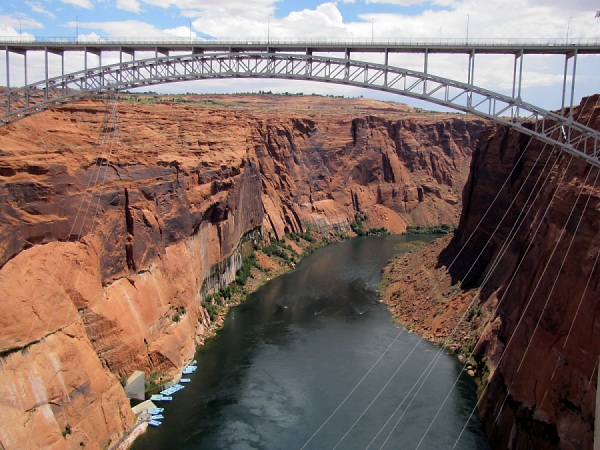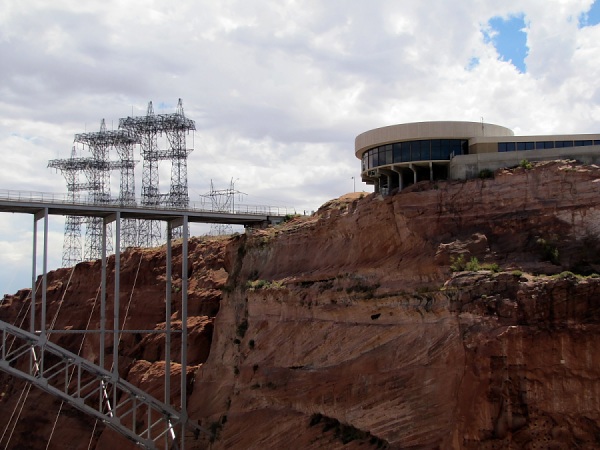Glen Canyon Dam / Lake Powell, AZ
Glen Canyon Dam is a concrete arch dam on the Colorado River in northern Arizona, near the town of Page. The dam is named for Glen Canyon, a colorful series of gorges, most of which now lies under the reservoir. Glen Canyon Dam, a concrete structure rising 710 feet above the Colorado River, was completed in 1963. The dam provides essential water storage and power for much of the southwestern United States. Visitors may tour the dam free of charge beginning at the Carl B. Hayden Visitor Center perched above the lake and power plant.
Lake Powell, the second largest artificial lake in the country, was formed by Glen Canyon Dam and named in honor of Civil War veteran and one-armed explorer John Wesley Powell, who led a scientific expedition in wooden boats down the Colorado River through the Grand Canyon in 1869.
The Glen Canyon National Recreation Area surrounding Lake Powell encompasses over 1.2 million acres and offers unparalleled opportunities for water-based & backcountry recreation. The recreation area stretches for hundreds of miles from Lees Ferry in Arizona to the Orange Cliffs of southern Utah, encompassing scenic vistas, geologic wonders, and a vast panorama of human history.
Lake Powell, the second largest artificial lake in the country, was formed by Glen Canyon Dam and named in honor of Civil War veteran and one-armed explorer John Wesley Powell, who led a scientific expedition in wooden boats down the Colorado River through the Grand Canyon in 1869.
The Glen Canyon National Recreation Area surrounding Lake Powell encompasses over 1.2 million acres and offers unparalleled opportunities for water-based & backcountry recreation. The recreation area stretches for hundreds of miles from Lees Ferry in Arizona to the Orange Cliffs of southern Utah, encompassing scenic vistas, geologic wonders, and a vast panorama of human history.


